Padel vs Pickleball - Raveling the Ultimate Court Showdown
Discover the epic battle of racquet sports in our Padel vs Pickleball showdown! Uncover the key differences and find out which game suits your style best.
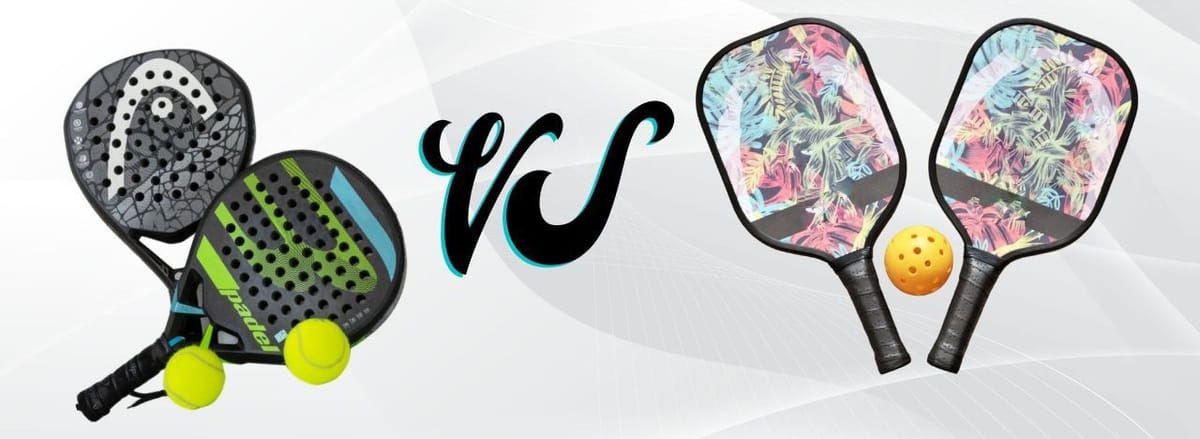
Welcome, sports enthusiasts and racquet rebels, to the ultimate showdown of the racquet realms – Padel vs. Pickleball!
Picture this: two paddles, one court, and countless moments of pure racquet excitement. It's the clash of the racquet titans, the quest for supremacy between two racquet sports that have taken the world by storm.
Which sport will come out on top, and which paddle will claim victory? We've got all the juicy details you need to make an informed decision. So, buckle up your paddles and get ready to embark on a racquet adventure like no other!
In this article, we'll dive into the heart of the matter – Padel vs. Pickleball – and explore the ins and outs of these thrilling racquet sports. From court dimensions to gameplay styles, we'll break down the differences and similarities, leaving you equipped to choose your racquet destiny.
Whether you're a seasoned player or a curious rookie, there's something for everyone as we unravel the world of padel and pickleball. So, let the games begin, and let the paddles swing, as we embark on this racquet showdown!
Padel Vs Pickleball
A comparison between Padel and Pickleball is bound to happen. While Padel is by far the fastest-growing racket sport in the world, Pickleball is the fastest-growing racket sport in the USA. How much of an overlap is there?
Even though pickleball and padel may look similar at first glance, the truth is that they evolved from completely different sports. Pickleball evolved from badminton while padel evolved from tennis. This means very different court dimensions, scoring, and rules of play.
The sport's unique blend of tactics, teamwork, and athleticism contributed to its widespread appeal. The sport's unique blend of tactics, teamwork, and athleticism contributed to its widespread appeal.
What Is Padel?
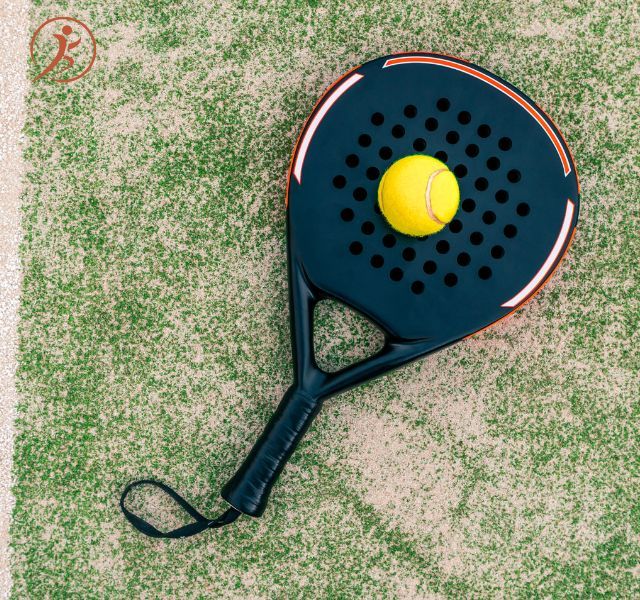
Padel, often referred to as Paddle Tennis, is a racquet sport that originated in Mexico during the 1960s. It was invented by Enrique Corcuera, who wanted to create a game that combined elements of tennis, squash, and badminton. Padel quickly gained popularity and spread to other Spanish-speaking countries, particularly in Spain, where it became a sensation.
Its accessibility sets it apart from physically demanding sports like tennis, making it suitable for people of all ages and fitness levels. Padel's focus on teamwork and communication adds a social appeal, fostering connections among players.
It has gained global recognition with tournaments and professional players gaining a devoted fan base. In a nutshell, padel is a thrilling racquet sport that merges the best of tennis, squash, and badminton, drawing enthusiasts from all walks of life.
What Is Pickleball?
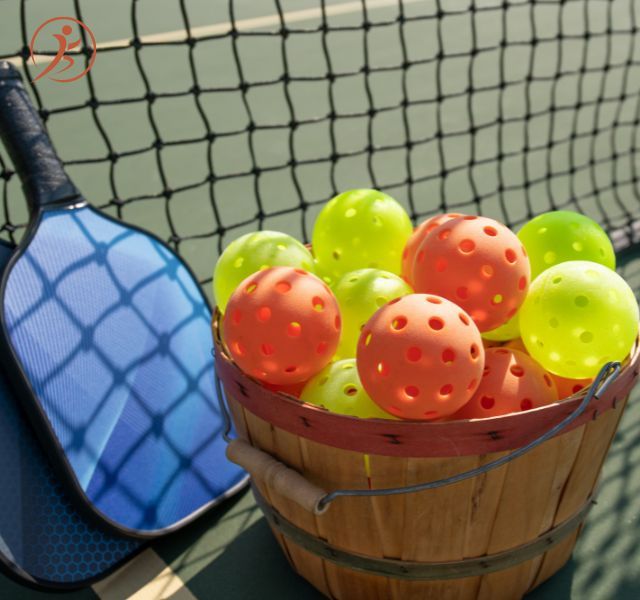
Pickleball, the beloved paddle sport, has a fascinating history that traces back to the summer of 1965 on Bainbridge Island, Washington. Joel Pritchard, a congressman, and his friend Bill Bell were trying to entertain their families when they discovered an old badminton court and a perforated plastic ball.
Utilizing ping pong paddles, they created a new game that combined elements of tennis, badminton, and table tennis. As the story goes, the game was named after Pritchard's dog, Pickles, who would chase after the ball and run off with it, hence "Pickleball."
From those humble beginnings, the sport rapidly gained popularity within the local community and eventually spread throughout the United States and beyond. As it grew, the rules were standardized, and the dimensions of the court were set to accommodate the increasing number of players.
Unveiling the Court Differences!
Paddle Tennis Court
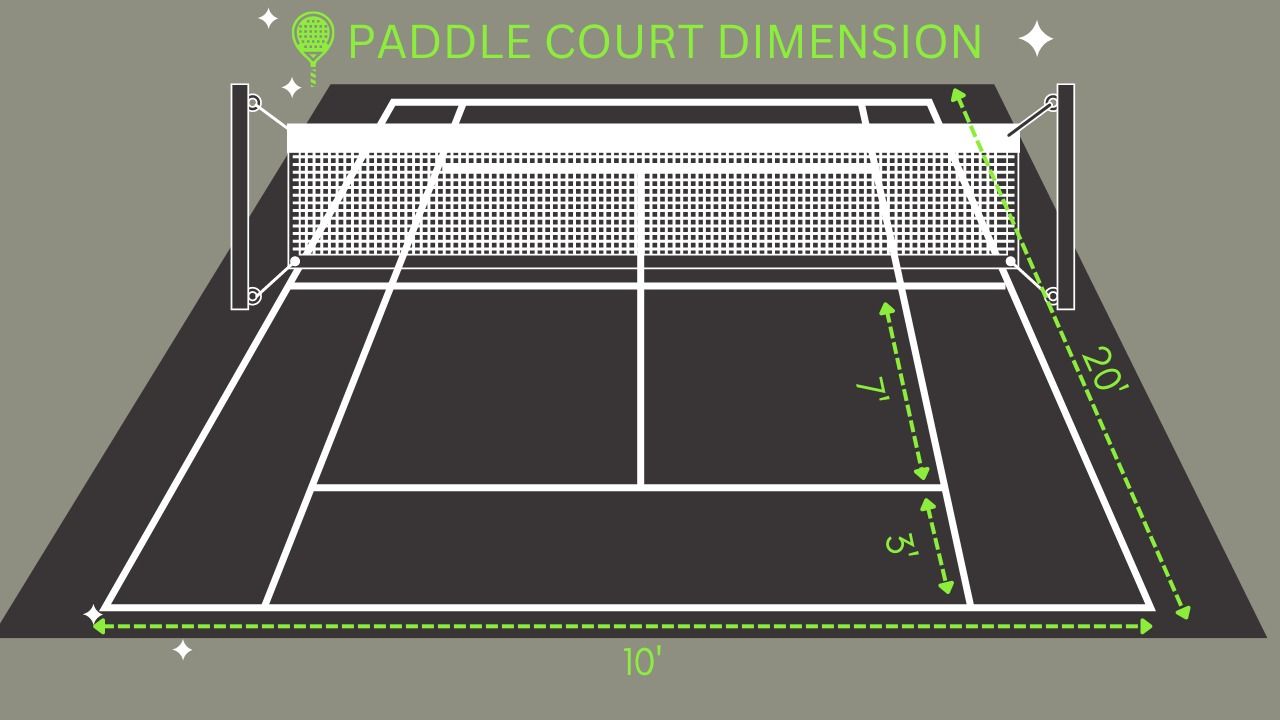
Court Size: 10 meters wide x 20 meters long
A paddle tennis court is less than half the size of a tennis court. And for those who love to play in the shelter of covered courts, you'll be delighted to know that they must have a soaring roof clearance height of at least 6 meters, letting your paddle soar freely under the skies!
Pop Tennis has 60ft x 21ft singles courts and 60ft x 27ft doubles courts. POP Classic is played on a 50ft x 20ft court.
Pickleball Court
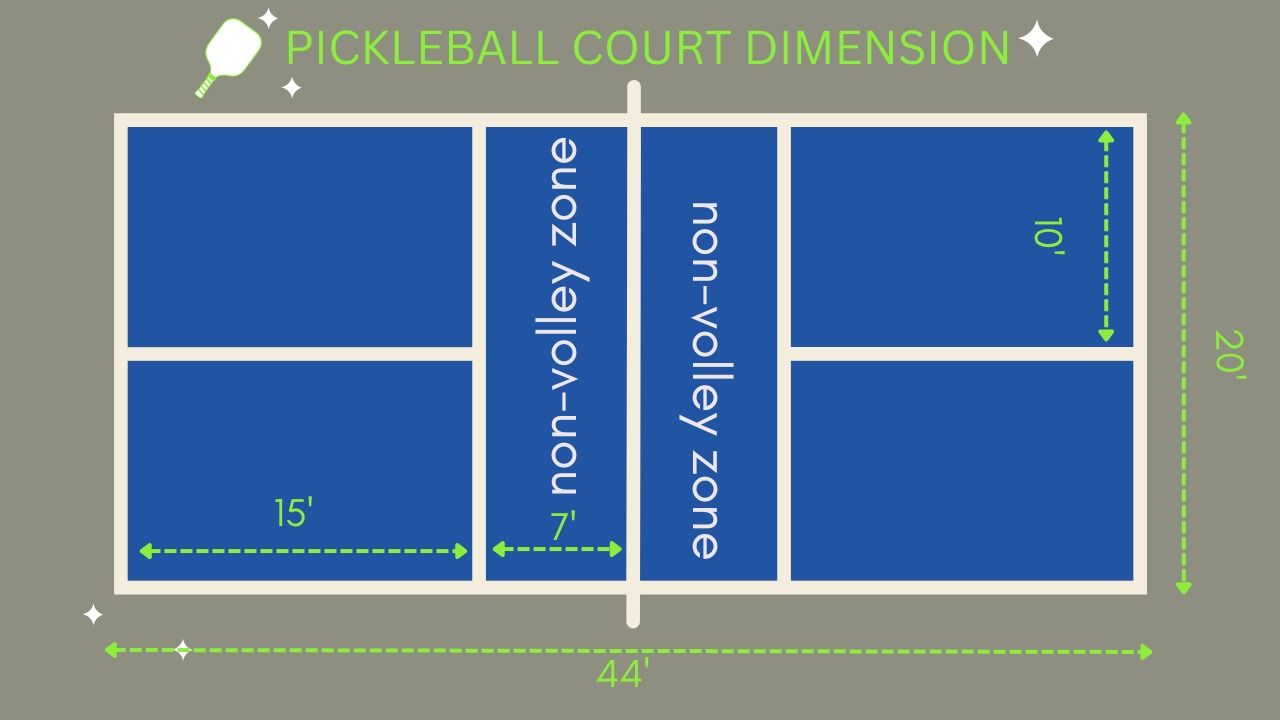
Court Size: 20 x 44 feet long
Pickleball court dimensions are the same area as a doubles badminton court. Along with the same pickleball court, you can do it in singles or doubles.
The sidelines are 36 inches tall, while the middle is 34 inches tall. A no-volley zone of 7 feet in front of the net exists in addition to the right and left service courts.
So, paddle pros, your court demands a bit more space to unleash your shots with a dash of artistic flair! On the other hand, pickleball champs revel in the coziness of a symmetrical sanctuary.
The choice is yours! Happy paddling and pickling, everyone!
Benefits
Padel
Padel is a doubles-focused sport, promoting social interactions and teamwork, making it an excellent way to connect with friends or meet new people.
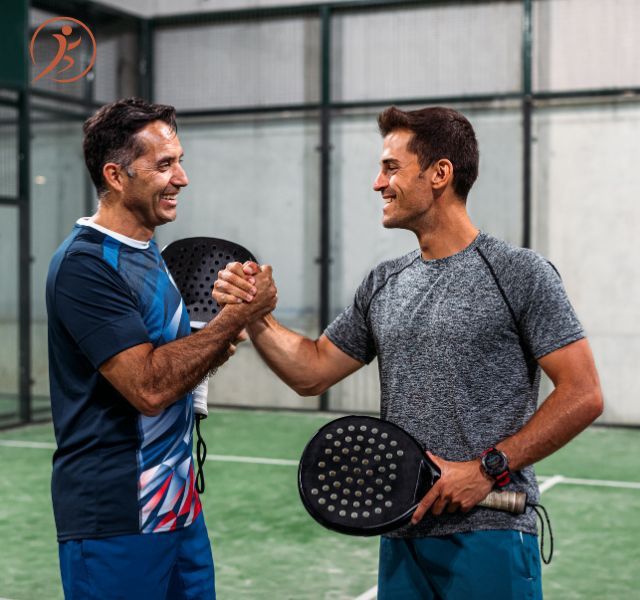
- Lower Impact: Padel courts have synthetic grass surfaces, which are more forgiving on the joints compared to hard surfaces, making it a good option for those with joint issues or seeking a low-impact sport.
- Fast-Paced: Padel combines elements of tennis and squash, resulting in quick and exciting rallies, keeping players on their toes and engaged throughout the match.
- Suitable for All Ages: Padel is a sport that can be enjoyed by people of all ages and skill levels, making it a family-friendly activity.
- Enclosed Courts: Padel courts are surrounded by walls, eliminating the need to chase after balls, and providing a more controlled and focused play experience.
- Strategy and Skill: Padel requires a mix of strategy, positioning, and skill, making it a mentally stimulating and challenging sport.
Pickleball
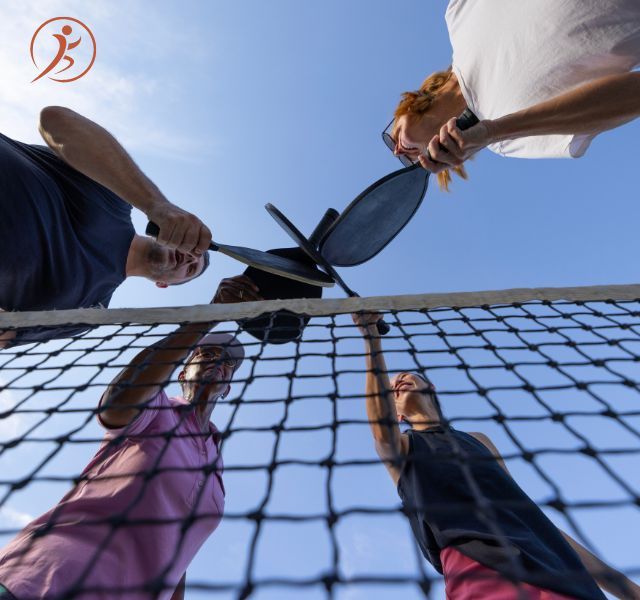
Pickleball can be played on various surfaces, including indoor and outdoor courts, making it accessible in different settings.
- Easy to Learn: Pickleball's simplified rules and smaller court size make it easy for beginners to learn and enjoy, allowing for a quick entry into the sport.
- Low Equipment Cost: Pickleball paddles and balls are relatively inexpensive compared to other racquet sports, making it a budget-friendly option.
- Physical Activity: Pickleball offers an excellent cardiovascular workout, helping improve endurance, agility, and balance.
- Inclusive for All: Pickleball is a sport that can be enjoyed by people of all ages, fitness levels, and abilities, promoting inclusivity and a sense of community.
- Social Interaction: Like padel, pickleball is often played in doubles, fostering social interaction and camaraderie among players.
Both padel and pickleball offer unique benefits, and the choice between the two depends on individual preferences, physical condition, and the level of competitiveness desired.
Rules
Padel
Padel is typically played in doubles, and the scoring is the same as tennis. The game is played to best-of-three sets, with each set won by the team that reaches six games first, with a two-game advantage. If the score reaches 6-6, a tiebreaker is played to seven points. Padel is a social and enjoyable sport. Players should always maintain good sportsmanship, respect their opponents, and follow the rules of the game.
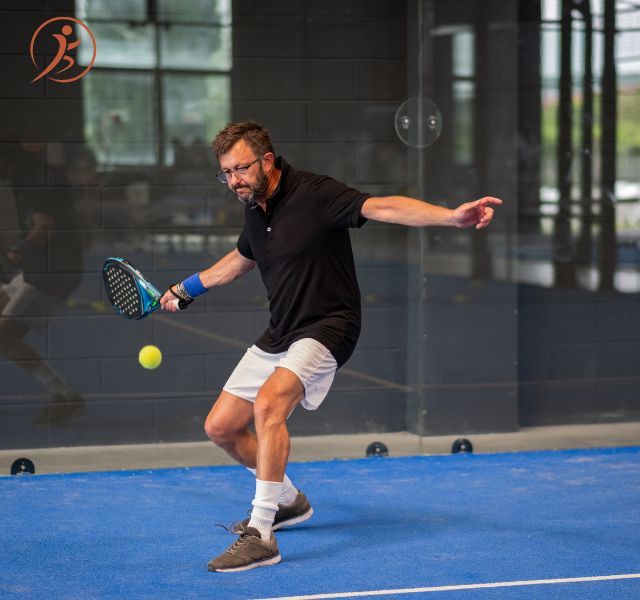
- Serve: The game starts with a serve, which must be executed underhand and hit diagonally across the net into the service box opposite the server. The ball must bounce once in the server's box before the return.
- Rally: After the serve, the game becomes fast-paced, with players hitting the ball back and forth, aiming to keep it in play by bouncing it off the walls of the court.
- No Volleys: Unlike tennis, in padel, players cannot hit the ball out of the air (volley) when it bounces inside the opponent's court. They must let it bounce before hitting it.
- Walls: The walls surrounding the court can be used during play, making it an integral part of the game. Players can direct the ball off the walls strategically to create angles and surprise their opponents.
- Double Bounce Rule: Both the serving and receiving teams must let the ball bounce once on their respective sides before hitting it. After that, players can hit it in the air or let it bounce once more.
- Point Loss: A point is lost if the ball hits a player before bouncing or if it goes out of bounds, including hitting the net and falling outside the court.
- Court Position: Players must strategically position themselves on the court to maximize their coverage and be ready to return shots from their opponents.
- Communication: Effective communication between teammates is essential in Padel, as it allows them to coordinate their movements and execute tactical shots more efficiently.
Playing padel is a fantastic way to enjoy a fun and challenging sport while socializing with friends or meeting new people. Whether you're a beginner or an experienced player, padel offers a unique and exhilarating experience on the court.
Pickleball
Pickleball can be played in both singles and doubles. The game is typically played to 11 points, and you must win by two points. In doubles, only the serving team can score points.
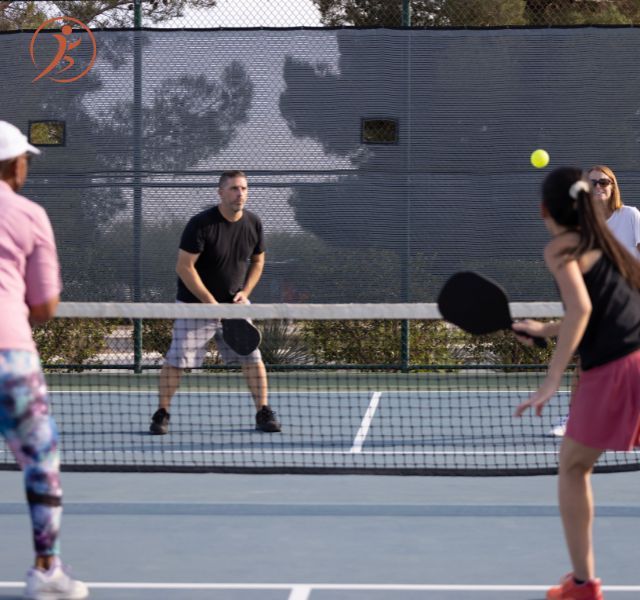
- Serve: The game starts with a serve, which must be executed underhand and hit diagonally across the net into the opponent's service court. The server must clear the non-volley zone (also known as the kitchen) to be valid.
- Double Bounce Rule: Both the serving and receiving teams must let the ball bounce once on their respective sides before hitting it. After the initial two bounces, players can hit the ball in the air or let it bounce once more.
- Non-Volley Zone (NVZ): The non-volley zone, also known as the kitchen, is a seven-foot area on both sides of the net. Players cannot hit the ball out of the air (volley) while standing in the kitchen. They must step outside the zone before volleying.
- Return of Serve: After the serve, the game becomes fast-paced, with players hitting the ball back and forth, aiming to keep it in play and strategically placing shots to gain an advantage.
- In and Out-of-Bounds: If the ball lands on any boundary line, it is considered in. If the ball lands outside the lines, it is out.
- Faults: Common faults in pickleball include serving into the net, serving out-of-bounds, stepping into the non-volley zone while volleying, and hitting the ball out-of-bounds.
- Court Position: Players must strategically position themselves on the court to maximize their coverage and be ready to return shots from their opponents.
- Sportsmanship: Pickleball is a friendly and social sport. Players should always maintain good sportsmanship, respect their opponents, and follow the rules of the game.
Playing pickleball is a great way to stay active, have fun, and enjoy a friendly competition with friends or other players. Whether you're a novice or an experienced player, pickleball offers a unique and exciting experience on the court.
Which is Easiest to Get Started With?
Pickleball is played on a court similar in size to badminton but with somewhat different sections. This sport is also extreme in the sense that it combines a little bit of tennis, badminton, and ping-pong. It’s quite the mix!
Padel is played in doubles within an enclosed court, and its size is about 1/3 of a traditional tennis court. Understanding and getting used to the glass walls is probably the biggest learning curve for players, regardless if they’ve played tennis or other racket sports before.
Which Is the Better Fitness Workout?
Both padel tennis and pickleball offer excellent fitness workouts, but the better choice depends on individual preferences and physical abilities.
